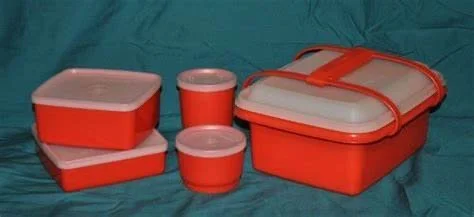Back to School
The kids around here started back to school this week. Friends are posting pictures online of their children holding up a sign with what grade they’re starting for their annual First Day of School picture.
Thankfully, that wasn’t a thing when I was growing up. There was always new clothes, new shoes, new book bags, notebooks, and if we were lucky, a new lunch box. No brown bags for us. We carried our lunches in metal boxes emblemized with things like Hot Wheels, Josie & the Pussycats, Scooby-Doo, and The Partridge Family, complete with matching a thermos that fit neatly inside. My all-time favorite, though, was a Tupperware lunch box that had individual containers for assorted foods. Unfortunately, some little creep threw it out the school bus window and I was forced to brown bag it after that.
We didn’t always pack a lunch from home. Each month the school would send home a paper with what was being served each day. We’d pick out what we’d what days to eat a school meal and what day for Mom’s lunches. Any time I saw stewed tomatoes or ham loaf, I was definitely opting for a packed PB&J. Now many cafeterias are peanut-free zones due to the rise in peanut allergies which can have deadly consequences. Heck, they don’t even serve peanuts on airplanes anymore.
Of course, all this was back when schools had kitchens and did the cooking themselves. Lunch ladies served up an assortment of dishes from Turkey Tetrazzini to fried chicken with mashed potatoes and green beans. Everyone loved pizza day even if the slices were square.
But somewhere along the line school boards discovered if they got rid of the kitchens and purchased pre-packaged meals that only needed to be reheated they could save a lot of money. The industrialized food complex took over and soon the kids were eating pre-packaged, ultra-processed, commodity foods.
Parents who want to see what’s available to their children for school lunches now must log on to a web page or an app. I checked out what was being served in the cafeteria of my childhood elementary school this week and was surprised to see tacos, cheese-stuffed breadsticks and marinara sauce, breaded chicken nuggets, and beef Frito pie—not much different than what you’d find at a fast food joint or a bar.
The Federal nutrition guidelines require public schools to serve healthy lunches and limit the amount of junk food available in vending machines. Vending machines? Why are junk food vending machines even in our schools? If we were lucky, we were offered chocolate milk once a week. Today, dairy farmers are fighting to have whole milk once again served in schools as now only low fat (1%) is allowed to be served in schools. By the way, commercial milk only contains 3.5% fat. They tell you their skimming the calories, but what they’re really skimming are the profits. In 2018, Federal nutrition guidelines also “broadened the milk options in the National School Lunch Program and School Breakfast Program by allowing local operators to permanently offer flavored, low-fat milk,” which is basically saying milk full of sugar and artificial flavorings.
The big question is always why can’t there be more locally produced foods in schools? Two of the biggest barriers are the bureaucracy and scale of need versus production. When I questioned several larger producers in the region if they’ve ever sold to local school districts, their laments echoed issues with coordinating public health officials and USDA regulations. One local orchardist willing to donate apples to their local school district was turned down because the fruit had to all be the same size in order to comply with portion control so they’d meet the requirements for the National School Lunch Program.
So if you don’t want your kids eating cheesy buffalo chicken dip at school, you’re going to have to pack their lunch and the best place to start is the farmers market. As many parents already bring their kids along to shop each week, involve them in the decisions about what they want to take in their lunch boxes. Kids are by no means stupid. They know what they like and can make up their own mind. Start with something as simple as asking them what fruits and vegetables they want in their lunch. Instead of purchasing individual cups of yogurt with fruit (and lots of added sugars), get a tub of locally produced yogurt and spoon it into a smaller, reusable container with sliced fruits or berries. Those lovely blackberries and raspberries are still in season. Vendors will have cherry tomatoes until the first frost, usually in November. Cherry tomatoes are the ultimate kid food and will hold up in a lunch box.
There are many types of lunch boxes and bags with removable cold packs so you don’t have to worry about perishables. Similarly, there are insulated containers for keeping food warm. Bento boxes, the Asian-style single serving meal containers with individual serving compartments have been around for over a thousand years, long before school lunches, yet now popular with the grade school set as well as adults.
Worried about the added effort? Consider cooking extra for family meals. For instance, if you’re serving chicken, cook extra and use it as a base in lunches for chicken salad or chicken wraps. Meat balls for pasta at dinner could mean a few extra meatballs with some BBQ sauce for dipping. Kids love to dip their foods. Nothing beats a hardboiled egg for easy and clean protein. If your kids won’t eat raw vegetables, try pickled vegetables.
Best of all, when you pack your kids lunches it gives you the opportunity to tuck in a treat. They’ll never remember a foil-wrapped Ding Dong, but what about a simple note of encouragement or love? They may think it’s corny or roll their eyes at you now, but they’ll remember…

